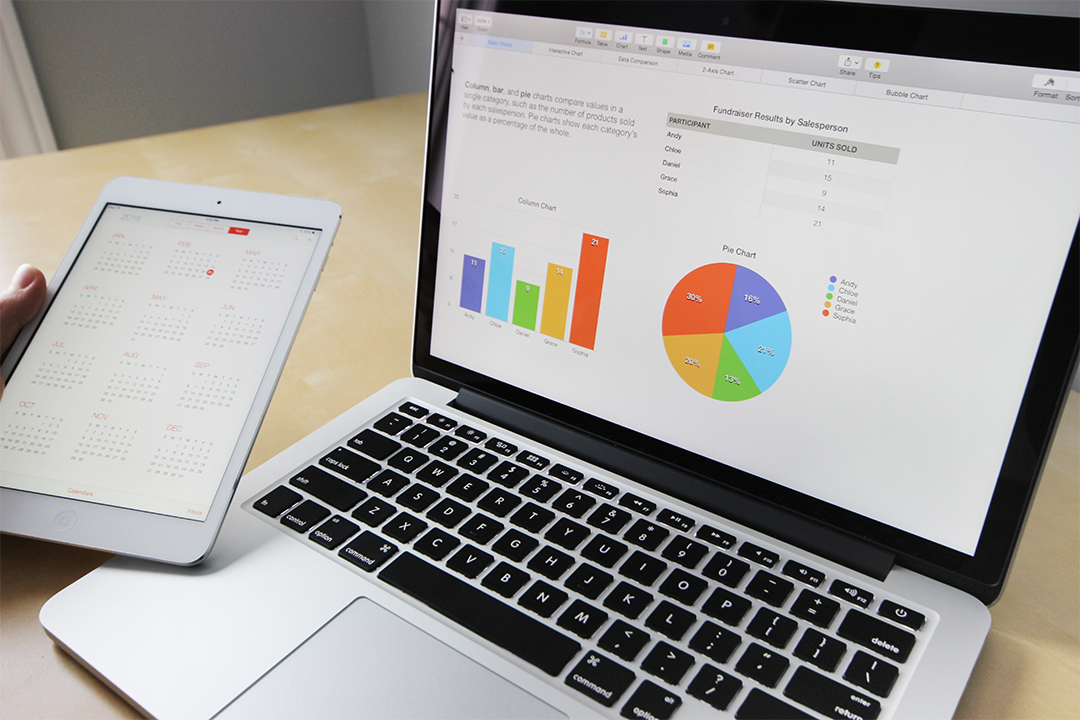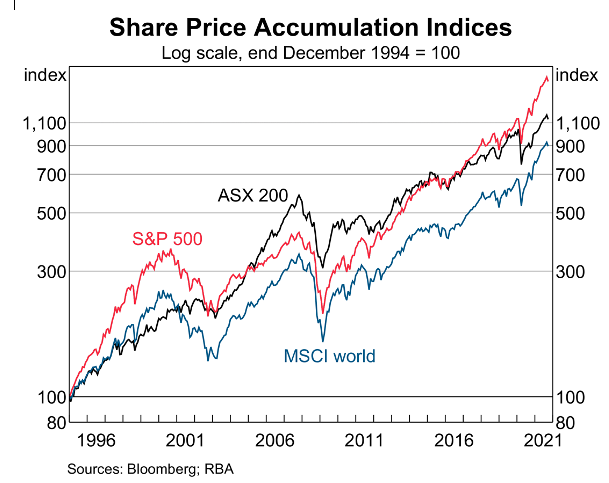

The latest data from the ATO shows that SMSFs are underinvested in overseas shares. At about a 2% weighting on average compared to 29% for Aussie shares, the imbalance is stark. The ATO data is not perfect (there are some classification issues with managed funds and trusts), but even if it is out by a factor of five times, SMSFs have a massive “home town” bias.
There are three very powerful reasons to invest offshore. Firstly, performance. The Australian sharemarket has underperformed over the long term compared to the US market, the latter accounting for about 55% of developed equity markets. This chart from the RBA shows the performance of the US S&P 500 (red) compared to the ASX 200 (black) and the MSCI World (blue). Since the GFC, the US market has considerably outperformed.

Next, the Aussie share market is concentrated and biased. The materials sector, for example, which includes the likes of BHP, Rio, Amcor and Newcrest Mining, makes up 17.2% of the Australian share market. In the US, it is a tiny 2.5%. Financials are weighted at 31.1% in Australia, whereas in the US it is 11.4% (see table below which compares sector weightings between the US S&P 500 and the ASX 200).

In contrast, information technology makes up 27.6% of the US S&P 500 compared to our paltry 4.5%. We simply don’t have the Microsofts, Amazons, Apples, Alphabets or Netflixes of this world, or where we do, companies such as Atlassian choose to be listed in the US.
And that’s not surprising, because the Aussie share market represents less than 2% of the world’s equity markets. That means 98% of opportunities lie outside Australia.
The case to invest offshore is pretty solid. So, how much should you invest?
There is no right or wrong answer to this, and while it will depend on your risk profile, appetite for growth or income, and investment objectives, we can get some guidance from looking at what the professionals do.
Australia’s biggest super fund, and arguably one of the best and most consistent performers, is Australian Super. Its ‘balanced’ fund, which targets 70-75% in “growth assets” such as shares and property and 25%-30% in defensive assets, is accessed by roughly 90% of its members. For international shares, it targets an allocation in the range of 10% to 45%, the same size range as that for Australian shares. As of 30 September, it had a remarkable 33.5% invested in international shares, well ahead of its 22.7% exposure in Australian shares.
Australian Super – ‘Balanced’ Investment Option Asset Allocation

Most of the other major industry super funds such as REST, CBUS or Aware Super also have material holdings in overseas shares.
Financial planners advise clients to allocate monies across the asset classes. They typically employ an allocation model based on historical performance correlations between the different asset categories such that given a desired level of risk, the highest expected return is achieved. Depending on the risk profile, the allocation to overseas shares for a ‘balanced’ or ‘growth’ investor is about 20% to 30% and can be as high as 40%.
So unless you are a conservative or moderate investor, who will have a majority exposure in defensive assets such as term deposits, bonds and credit securities, I reckon you want to be aiming for about 20% to 30%. My guess is that for most ‘DIY’ investors, that’s a big jump on the exposure they have today.
How do you invest offshore?
The easiest way is through an index tracking exchange traded fund. Passively managed, these are low cost and can be bought or sold on the ASX. For example, IVV from iShares which tracks the S&P 500 index, VGS from Vanguard which tracks the MSCI World Index.
Importantly, they are guaranteed to deliver an index return, minus a tiny fraction – nothing more, nothing less. You will be taking some currency risk (so if the Aussie dollar appreciates, your return will be negatively impacted), but you can also choose to invest in “currency hedged” versions of the same products. IHVV is iShares' currency hedged version of IVV, VGAD is the currency hedged version of VGS.
Alternatively, you can invest on the ASX in an actively managed fund or listed investment company. Managers have different investment styles and approaches, so you may want to spread your investment monies across two or three different managers. While there are a plethora of managers to choose from, here are three near the top of my list: the Magellan Global Fund through MGOC; the Morningstar International Shares Active Fund through MSTR and WCM Global Growth through WQG.
Last but not least is you can invest directly by buying the individual company shares. This is now relatively straightforward and low cost, with many brokers such as CommSec, nabtrade and CMC offering an international broking service. The downside with this method is that developing a diversified portfolio will take some effort.
Whatever the method, it is not hard to increase your exposure to offshore shares.